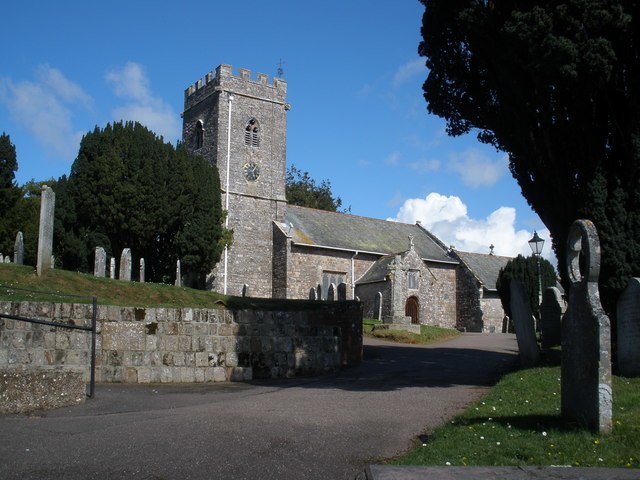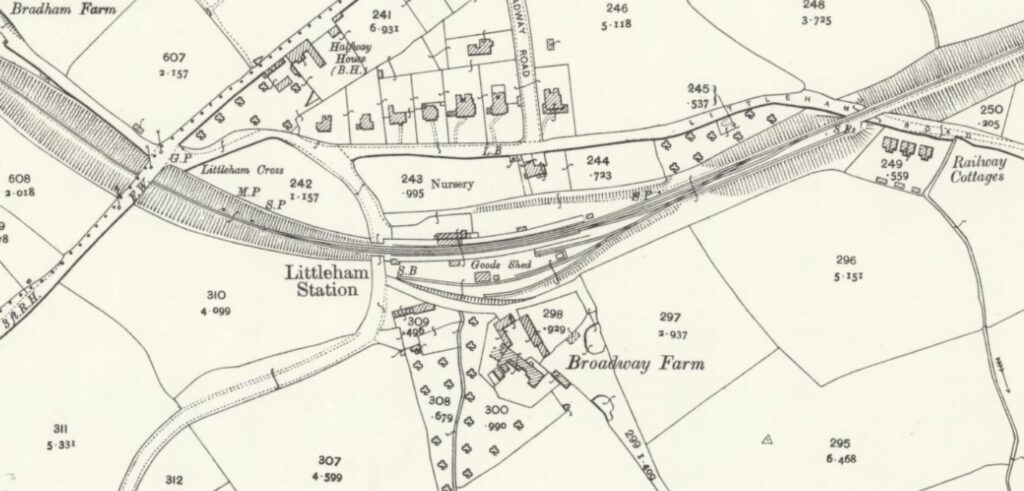Introduction
James Smith Conway was born at Netherbury in about 1858 and moved to Sherborne with his parents in the 1870s after the family was hit by misfortune. James was a railway labourer for most of his adult life, spending about thirteen years at Bradford Abbas and nine years at Hardington Marsh. He later relocated to Littleham, Devon, after the Exmouth to Budleigh Salterton line was opened in June 1903. Two of his sons became employees of the London and South Western Railway Company.
Early years at Netherbury
James was born at Netherbury in about 1858, the sixth of eight children born to Ambrose and Elizabeth Conway. Ambrose was a farm labourer who was born in the parish, while Elizabeth was a shepherd’s daughter originally from Wynford Eagle.
In May 1861, the family suffered a heavy blow when their cottage was destroyed by fire.[1] Afterwards, they moved into a cottage owned by a Beaminster grocer named Galpin. Though he appeared helpful, Galpin may have exploited their situation, leading them into debt. In December 1861, he sued Ambrose at Bridport County Court to recover £6 18s for shop goods supplied to the family. Ambrose denied that he owed anything, producing a small passbook to support his case, but it soon became evident that he could not read or properly understand its contents. Galpin also sued him for 9s in rent. While the magistrates ordered Ambrose to clear the shop debt by paying instalments of 8s, they accepted that he owed nothing in rent.[2]
According to information presented in court, Ambrose and his family left Galpin’s cottage on 20 June 1861, which could be the date they moved to Sherborne.
Sherborne
By April 1871, the family was living in a house near Wyke Farm, Sherborne.
Bradford Abbas
In the 1870s, the family moved half a mile west to Bradford Abbas.
Occupations
James was a labourer by age fifteen and a railway labourer by twenty-three.
Marriage
On Christmas Day 1877, James married Sarah Gill, the daughter of Thomas and Caroline Gill, at Bradford Abbas. Her father was also a farm labourer.
Married life at Bradford Abbas
By April 1881, James and Sarah lived at 2 Railway Huts, Bradford Abba. They lived in the village for about another thirteen years and had seven children there. The 1891 census shows them living in a four-room house with seven children.
Hardington
In about 1894, James and his family moved to Hardington Marsh, where James worked as a foreman platelayer. Their three youngest children—Arthur Louis, Percy William, and Alice May—were born in Hardington, and sadly, Arthur Louis died there. By March 1901, four of their children were at home, while one was in Lambeth, two in Yeovil and one at Haselbury Plucknett. Their last child, Alice May, was born on 12 June 1901.
In March 1896, James stood for election to the parish council but was unsuccessful.[3]
The voters’ lists and Guardian Valuations indicate that the family left Hardington in 1902 or 1903.
Littleham
By April 1911, James and his family lived at 1 Station Cottages, Littleham, Devon. Littleham Station was on the line between Exmouth and Budleigh Salterton, which opened in 1903. The London and South Western Railway Company may have arranged James’s transfer to act as a foreman platelayer. James and Sarah were still there ten years later.[4]
While they were at Littleham, James and Sarah’s oldest daughter, Martha Jane, died in Croydon, aged 29, two years after her marriage in 1905. At about the same time, their daughter, Mary Elizabeth, had an illegitimate son at Croydon.
Death
James and Sarah both died in the Wells area in 1932, in or just before the second quarter of the year. James was 74, and Sarah was 73. Their last residence may have been the home of their married daughter, Ada Parsons.
Children
James and Sarah had four sons and six daughters, eight of whom were still alive in 1911. Two of their sons became employees of the London and South Western Railway Company: Henry George became a passenger guard at Bournemouth, and Percy William worked as a railway checker at Bideford.
References
[1] Dorset County Chronicle, 23 May 1861, p.6.
[2] Bridport News, 7 December 1861, p.2. Galpin claimed that the house was let by the quarter, while Ambrose and his wife maintained that it was let weekly. They said that they left on 20 June and had paid rent up to that time, partly in money and partly in current and gooseberry bushes, and that Galpin had agreed to take them.
[3] Western Chronicle, 13 March 1896, p.7.
[4] By 1921, the six cottages were called “Railway Cottages.”


